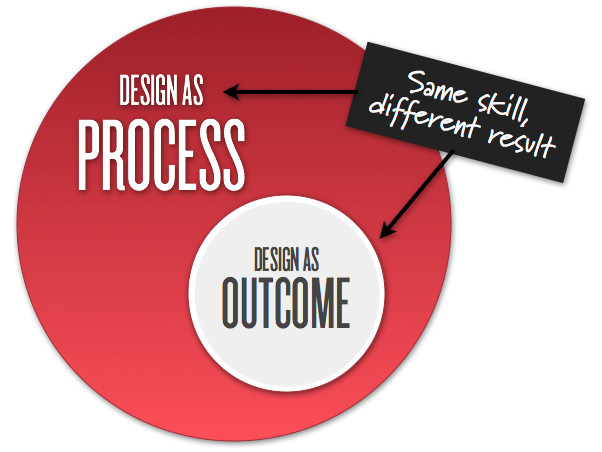
Our culture is craving the power of design. After all, who doesn’t enjoy using something that looks nicer? It’s scientifically proven that people have more trust, find fewer faults, and are more willing to work through glitches with well designed, enjoyable products.
But more often than not, that “fresh coat of paint” is only putting lipstick on a pig. Design is more than making something pretty, it’s a self-exploration process that can result in three significant insights for your organization.
1. Understanding Your Goals
A designer might have 500 opinions on your current design, but without the context of your goals, they’re just taking shots in the dark that don’t scratch your real itch.
Defining the goal is the first step in the UX Stack, Credera’s roadmap for making sure we solve a project’s goals. It also will help us pinpoint what you’re really looking to solve.
Are you looking to increase revenue? Increase conversion rates? Make customers happier? Make your checkout path more efficient? Defining the goal makes sure that a redesign solves actual problems. Design isn’t just a fancy form of self expression to make something look pretty. It’s how a product achieves your goals.
Design is a secondary issue that is usually representative of a much deeper primary issue that we’ll uncover in the early stages of the UX stack.
Once the goal is defined, we can begin to reframe the problem: design a faster horse versus inventing a new way to get around.
2. Redefining Your Problem
More often than not, projects start by modeling the opportunity – something like a business model or a business requirements document.
That approach is task focused, looking at what new things my users can do. It results in incremental improvements that can sustain a company’s growth for some time, but rarely does it produce an entirely new product class. Over time, it becomes the downfall of established companies.
The Design Process redefines the challenges facing the organization. It asks questions like “do you build a horse and buggy or do you build a means of transportation”? It is experience focused, understanding the underlying job you are doing for your users.
That’s in contrast to design as an outcome, which is the coat of paint delivered at the end of a project.
3. Focusing on the Experience, not Tasks
The iPad is not a new idea. Microsoft and their partners had been making Tablet PCs for nearly a decade. So why did Apple leave everyone in the dust?
They started with a different goal, one that was experience-focused: “create the best experience for things people do every day: email, web browsing, and photos,” as Tim Cook said in the iPad 3 announcement.
Microsoft focused on adding a task for laptops: the ability to touch the screen.
Reframing the core goal fundamentally shifts the design work. It forces you to think beyond features and what the product looks like. It detaches you from old ideas and starts with a blank canvas.
In the iPad’s case, it went so far that it eliminated all references to a traditional computer, ushering in the “Post-PC” era.
Microsoft added a bullet point to a feature checklist, Apple defined a new category of device.
Experience Design is about rethinking how your business can better serve your user’s pain points. How it looks is one tool in our kit, but a successful design project is about digging deeper, understanding your goals, redefining your problem, and often times rethinking why we’re even tackling the redesign in the first place.
Contact Us
Let's talk!
We're ready to help turn your biggest challenges into your biggest advantages.
Searching for a new career?
View job openings